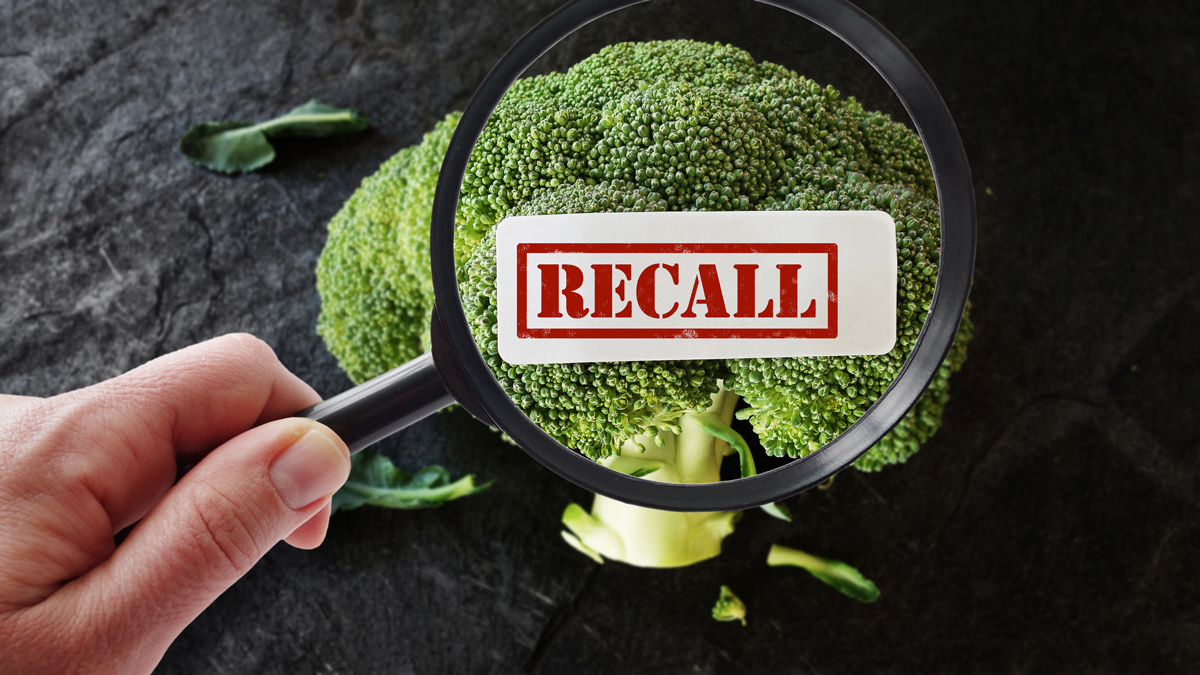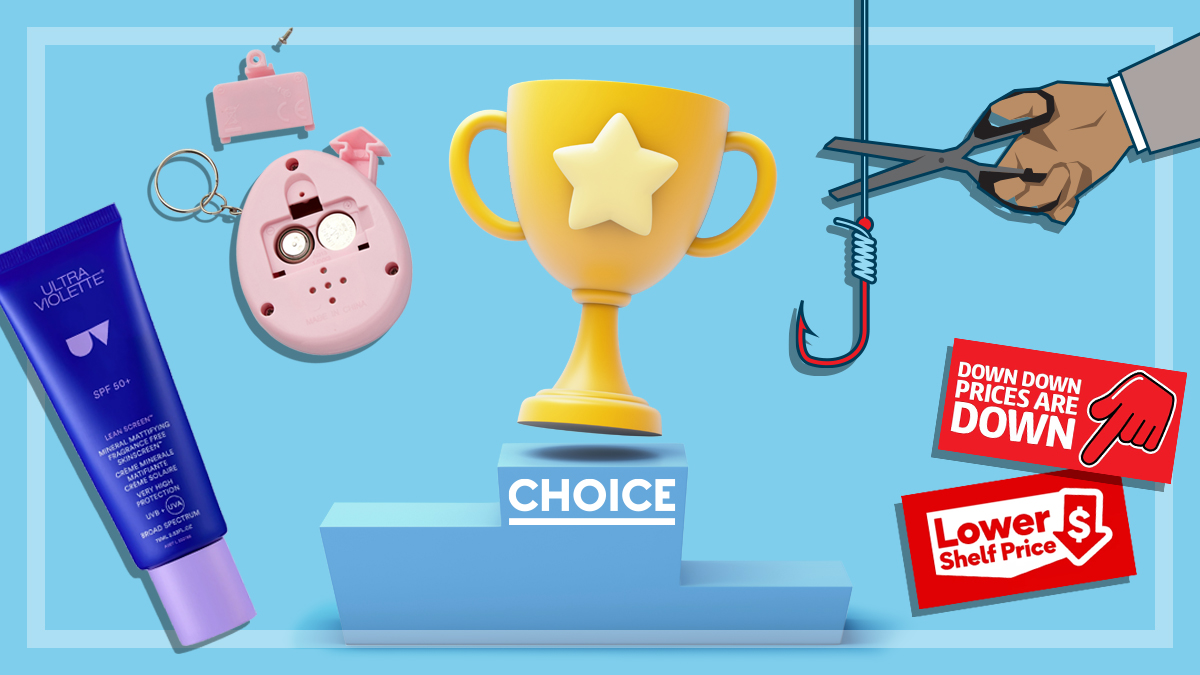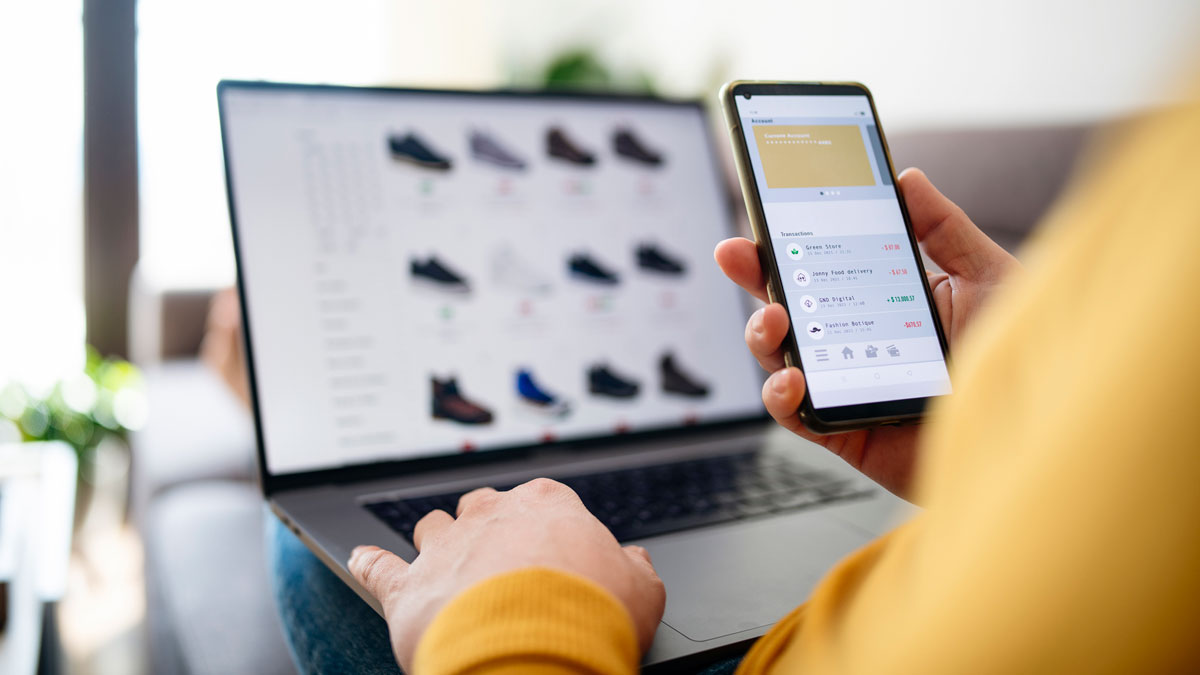Get our independent lab tests, expert reviews and honest advice.
Product recalls and safety

Need to know
- In Australia, hundreds of products are recalled every year, but only about half of them will be returned
- Some recalled products, such as Takata airbags, can cause serious injury and even death
- Australia has a good regulatory framework, say experts, but doesn’t have a general safety provision and hasn't adopted all international standards
On this page:
- Product recalls are worth paying attention to
- A company's responsibility to consumers
- Voluntary vs compulsory recall
- Product safety pledge for online shopping sites
- Why some product recalls are more effective than others
- Communicating a recall to consumers
- Refund rights and recalled products
Of the hundreds of consumer products recalled every year in Australia, on average only about half will be returned to the company.
This means there are a lot of faulty, and potentially dangerous, products that continue to live on in people’s kitchens, laundries, garages and children’s toy boxes.
Nor are companies legally required to make sure all faulty products are returned.
Now a new voluntary initiative aims to limit unsafe products being sold online. But is it enough?
Product recalls are worth paying attention to
Defective products aren’t just an inconvenience – they have the potential to kill. They also come in all shapes and sizes. But can consumers rely on recalls to avoid them?
In recent years, one of the most high profile and widespread recalls has been that of Takata airbags, which involved tens of thousands of vehicles with the potentially faulty safety device. At CHOICE, we’ve reported on this rolling recall, which the government has now made compulsory, over several years.
In 2021, almost 400 product recalls were issued
When it comes to recalls of electronic toys and devices, many involve button batteries that are not safely secured and could come out or be easily opened by children. Again, we’ve long highlighted the dangers of small children swallowing button batteries.
Alarmingly, the list of recalled products goes on, covering everything from kids’ toys and equipment to food, electronic devices, vehicles and accessories and industrial equipment. In 2021, almost 400 product recalls were issued.
How to find out about product recalls
If you want to stay on top of which products have proven unfit for the marketplace, sign up for recall updates from the ACCC’s product recalls website. The ACCC also has a smartphone shopper app that gives up-to-date information on product recalls.
A company’s responsibility to consumers
Australia lacks a law that would ensure all products have to be safe before they go on sale. This regulation – sometimes called a general safety provision – exists in other countries and is something we’ve encouraged our government to adopt here.
That said, there are some systems in place that help to ensure the products you buy are safe. For instance, it’s unlawful to sell banned products, and products or product-related services must comply with any relevant mandatory standards. Consumers also have a right to a refund if a product is found to be unsafe.
What may surprise you is that there isn’t much onus on suppliers to make sure their product recalls are effective
But product recalls will happen. When they do, there are processes that require companies to act to get the products out of consumers’ hands.
Suppliers must notify the minister responsible and, depending on the product, notify a regulator or safety authority. There’s also a mandatory requirement to report any death, serious illness or injury related to a consumer product.
What may surprise you is that there isn’t much onus on suppliers to make sure their product recalls are effective. In fact, there’s no recall standard at all (although there are guidelines that suppliers or companies should adhere to) and no benchmarks that a recall process needs to meet.

Voluntary vs compulsory recall
Typically, a recall is issued by a supplier when the supplier is made aware of a safety issue, although the Australian Competition and Consumer Commission (ACCC) or other regulator may also issue a safety recall.
When the recall is issued by the supplier, it’s voluntary, meaning the supplier voluntarily takes action to remove the goods from distribution and sale.
But the recall can also come after enforcement or compliance action by the ACCC. For instance, a compulsory recall may follow if the supplier hasn’t taken satisfactory action to prevent the goods from causing injury.
The ACCC is responsible for making sure suppliers remove unsafe products from sale and retrieve them from consumers. In fact, it’s a legal requirement under Australian Consumer Law (ACL) that all the goods subject to a recall are removed from the marketplace when a recall occurs.
Australia falling short of international standards
Australia has a good regulatory framework that compels companies to take action if there’s an issue of consumer safety.
But product recall expert Steve Hather, expert witness and co-author of the international standard on product recalls (ISO 10393:2013), told CHOICE that Australia has failed to adopt the International Standard for Product Recalls. This means that although industry recall codes do apply in Australia, they can lack consideration of consumers’ interests.
In the Takata airbag case, for example, Hather says the Federal Chamber of Automotive Industries code, the automotive industry’s product recall guide, falls short. “It does not even mention the phrase ‘consumer safety’,” says Hather. “It is entirely focused on repairing a fault, regardless of how dangerous the fault is.”
And although regulators can force companies to conduct recalls and “dictate how that recall should be conducted, the reality is this rarely happens”, he says.
Product safety pledge for online shopping sites
Recognising the growing popularity of online shopping, the ACCC launched an Australian product safety pledge in 2020. The pledge includes take-down requests for unsafe or recalled products, and promotes compliance and education of suppliers, as well as technology initiatives to bolster product safety online.
Who has signed up?
The inaugural signatories included AliExpress, Amazon Australia, Catch.com.au, eBay Australia and MyDeal.com.au.
The pledge commits signatories to 12 product safety-related actions, including staying up to date with product safety and recalls, having a recall/unsafe product point of contact, removing identified product listings within two days, and having clear internal processes to take down unsafe products. One of the other key commitments is having a clear process for consumers to notify the online marketplace directly of an unsafe product listing.
According to the ACCC, the pledge will help mitigate product safety risks in the world of online shopping. The regulator also says it wants to add more signatories to the pledge.
Why some product recalls are more effective than others
The ultimate goal of a recall is to retrieve as many of the dangerous products from consumers and the marketplace as possible. But return rates can vary widely and ACCC data suggests that only about half of affected products are returned to sellers.
So why are some recalls more effective than others? In part, it depends on the type of product being recalled and how much it’s worth. But other factors also play a role, such as how dangerous it is, how easily it can be returned or fixed, and how well the recall is communicated.
Return rates vary but can be quite low in light of the millions of products with a recall notice in Australian homes.
- The average return rates of toys are on par with other products, meaning one in five toy recalls will achieve a return rate of 80% or higher.
- Vehicle return rates are typically high because they’re high-value products and owners are easier to trace through the national motor registry database, NEVDIS.
An ACCC review in 2010 found that recalls work best when the regulator has a greater level of involvement in all aspects of the recall process.

Communicating a recall to consumers
The key to an effective recall hinges on how well it’s communicated to consumers.
Once a product is on the market, getting it back isn’t easy. The Australian Consumer Law dictates how the recall notice should look and what needs to be included, but it doesn’t extend to how the company should advertise or communicate the recall.
Direct contact
Direct contact with consumers, rather than newspaper announcements and the like, is by far the best way to get in touch with them. To do this, companies need to trace all owners of the product. Major retailers can often use warranty registrations and even loyalty programs. They could also access customers’ details through credit and debit card sales’ records, although this would raise issues of privacy.
Other forms of contact
Contacting distributor and supplier networks, messaging people on social media, posting on industry blogs, and even using word of mouth through salespeople are other ways to alert consumers.
Clear messaging
Suppliers should also have a clear recall process that outlines whether goods are to be collected, repaired or destroyed. Product information such as batch numbers and supplier details and dates should also be given to help businesses with product tracing.
Incentives beyond standard repair, replacement or refund, such as offering gift vouchers, are another way to entice people to return the recalled product.
The ACCC offers templates to help suppliers include all the necessary information when carrying out a product recall.
Conflict of interest?
In most cases, the company supplying the defective goods is responsible for doing the recall. But could the recall be compromised by the company’s possible reluctance to spread a negative message about its product?
“Many companies will want the least amount of publicity possible about a recall,” says Hather, who’s been involved in the prevention and management of dozens of product recalls.
Some companies try to bury the recall message on their website, he says, which flies in the face of ACCC guidelines suggesting brands display the recall notice prominently on their homepage.
Refund rights and recalled products
The standard repair, replace or refund provisions apply in relation to recalls. Which one you get depends on the risk analysis of the recall, according to the ACCC.
The ACL also applies here. Under the ACL, if a problem constitutes a major product failure, you have the right to choose between a refund or a replacement. An unsafe product, according to the ACCC, constitutes a major failure.





